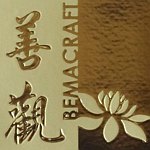Natural Jade Maitreya Buddha Wax Wire Braided Gold Bracelet
Bracelet length: Suitable for wrist circumference 14~16 cm (can be adjusted freely)
Gemstone(1): Natural Grade A jade Maitreya Buddha carving, 1 piece, icy and transparent with a light blue-green color, produced in Guatemala, commonly known as Guatemala, height 13mm x width 15mm x thickness 2mm. (In the close-up photo, you can see that there are a few small, natural cotton-like structures in the belly of the Maitreya Buddha)
Gemstone(2): Natural light green and light yellow jadeite beads, 4 pieces, about 3mm in diameter.
Metal accessories material: Gold-plated
Other materials: Wax thread
If the length is not suitable for your wrist, please tell me and I can help you modify it~ ^_^
<How to measure wrist circumference: You can take a cotton thread, place it against the skin of your wrist, and gently wrap it around (not too tight or too loose, just place it against the skin, no gaps in the middle~). Mark the beginning and end of the cotton thread, straighten it, and use a ruler to measure the length between the beginning and end marks, which is your wrist circumference!! >
< Gemstone Basics> Jade
Jadeite is also called jadeite, jadeite, jadeite, and Burmese jade. We usually call the emerald green one "jade" and the red one "fei".
Jadeite is a type of jade commonly known as jade (jade includes: jadeite, nephrite, shimmering jade, Xiuyan jade, Dushan jade, Huanglong jade, Malay jade, etc.). Among all types of jade, jadeite has the highest overall price and value, so it is hailed as the "King of Jade" by Oriental people. More than 90% of the world's jade is produced in Myanmar, and those that can reach the grade of jewelry are even rarer.
The evaluation of jade is very complicated. Generally, it is necessary to evaluate the color, texture, transparency, carving and weight at the same time. It is difficult to sum it up in one sentence. The best ones are usually green in color, fine in texture, high in transparency, and exquisite in carving.
In recent years, jade mines have also been discovered in Guatemala. The jade produced in Guatemala has the same main components as the jade traditionally produced in Myanmar, but there are slight differences in trace elements. Both are currently natural jade.
Bracelet length: Suitable for wrist circumference 14~16 cm (can be adjusted freely)
Gemstone(1): Natural Grade A jade Maitreya Buddha carving, 1 piece, icy and transparent with a light blue-green color, produced in Guatemala, commonly known as Guatemala, height 13mm x width 15mm x thickness 2mm. (In the close-up photo, you can see that there are a few small, natural cotton-like structures in the belly of the Maitreya Buddha)
Gemstone(2): Natural light green and light yellow jadeite beads, 4 pieces, about 3mm in diameter.
Metal accessories material: Gold-plated
Other materials: Wax thread
If the length is not suitable for your wrist, please tell me and I can help you modify it~ ^_^
<How to measure wrist circumference: You can take a cotton thread, place it against the skin of your wrist, and gently wrap it around (not too tight or too loose, just place it against the skin, no gaps in the middle~). Mark the beginning and end of the cotton thread, straighten it, and use a ruler to measure the length between the beginning and end marks, which is your wrist circumference!! >
< Gemstone Basics> Jade
Jadeite is also called jadeite, jadeite, jadeite, and Burmese jade. We usually call the emerald green one "jade" and the red one "fei".
Jadeite is a type of jade commonly known as jade (jade includes: jadeite, nephrite, shimmering jade, Xiuyan jade, Dushan jade, Huanglong jade, Malay jade, etc.). Among all types of jade, jadeite has the highest overall price and value, so it is hailed as the "King of Jade" by Oriental people. More than 90% of the world's jade is produced in Myanmar, and those that can reach the grade of jewelry are even rarer.
The evaluation of jade is very complicated. Generally, it is necessary to evaluate the color, texture, transparency, carving and weight at the same time. It is difficult to sum it up in one sentence. The best ones are usually green in color, fine in texture, high in transparency, and exquisite in carving.
In recent years, jade mines have also been discovered in Guatemala. The jade produced in Guatemala has the same main components as the jade traditionally produced in Myanmar, but there are slight differences in trace elements. Both are currently natural jade.




